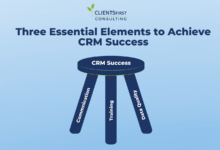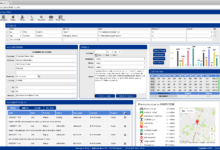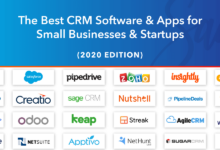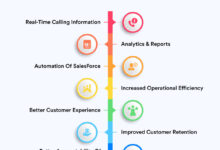CRM Roofing: Streamlining Your Business
CRM Roofing isn’t just software; it’s a game-changer for roofing businesses. Imagine effortlessly managing leads, scheduling jobs with precision, and boosting customer satisfaction – all from one centralized platform. This deep dive explores how CRM systems specifically designed for the roofing industry can revolutionize your operations, from initial contact to project completion and beyond. We’ll cover everything from choosing the right software to maximizing its potential for growth and profitability.
This exploration covers market trends, essential features, implementation strategies, and best practices for leveraging CRM data to drive your roofing business forward. We’ll also examine the crucial role of integration with field operations and the power of insightful reporting and analytics in achieving your business goals.
CRM Roofing
The roofing industry, while traditionally reliant on pen-and-paper methods, is increasingly embracing technology to streamline operations and boost profitability. This shift is driven by the need for improved customer relationship management (CRM), efficient job scheduling, and enhanced communication. CRM software specifically designed for roofing businesses represents a significant opportunity for growth and efficiency gains.
CRM Roofing Market Overview
The market for roofing-specific CRM software is experiencing substantial growth, fueled by increasing competition and the desire for businesses to improve customer satisfaction and operational efficiency. While precise market size figures are difficult to obtain due to the fragmented nature of the industry and the lack of publicly available comprehensive data, analysts suggest a considerable and expanding market. Growth is projected to continue as more roofing companies recognize the benefits of leveraging technology for better lead management, project tracking, and customer communication. This translates to increased revenue and improved bottom lines. The potential for growth is particularly strong among smaller to medium-sized roofing businesses (SMBs) who often lack the resources to implement sophisticated, custom-built solutions.
Key Players and Market Share
Pinpointing exact market share for each player in the CRM roofing software sector is challenging due to the lack of publicly available, comprehensive data from these often privately held companies. However, several companies are prominent in this niche, offering varying levels of functionality and pricing. These players often compete based on features, integrations, ease of use, and customer support. Some companies may focus on specific segments of the roofing market (e.g., residential vs. commercial), leading to variations in market penetration. A competitive landscape analysis would require extensive market research, including surveying roofing businesses and analyzing software adoption rates.
CRM Roofing Software Pricing Models
Roofing CRM software typically utilizes subscription-based pricing models, often tiered based on the number of users, features, and storage capacity. This allows businesses to scale their software usage as their needs evolve. Monthly or annual subscriptions are common. One-time purchase models are less frequent, as ongoing software updates and support are crucial for maintaining functionality and security. The subscription model offers flexibility, but can lead to higher overall costs over time compared to a one-time purchase if the software remains relevant and functional without upgrades. Businesses should carefully weigh the long-term costs and benefits of each model before selecting a solution.
Comparison of CRM Roofing Software
| Software Name | Key Features | Pricing | Target Customer |
|---|---|---|---|
| Example Software A | Lead management, job scheduling, customer communication, reporting | Subscription: Starting at $X/month | Small to medium-sized roofing businesses |
| Example Software B | Lead management, project management, invoicing, integration with accounting software | Subscription: Tiered pricing based on features and users | Medium to large roofing businesses |
| Example Software C | Basic CRM functionalities, focused on contact management and communication | One-time purchase: $Y | Small roofing businesses with limited budgets |
| Example Software D | Comprehensive CRM, project management, estimating, and reporting; integrates with various other business tools. | Subscription: Custom pricing based on business needs. | Large roofing companies with complex operational needs. |
CRM Roofing
Choosing the right CRM can significantly boost your roofing business’s efficiency and profitability. A well-designed system streamlines operations, improves customer relationships, and ultimately, increases your bottom line. This section details the key features a roofing CRM should offer.
Essential Features for Efficient Lead Management
Effective lead management is crucial for any roofing business. A robust CRM should provide tools to capture, qualify, and nurture leads efficiently. This includes features that allow for easy lead entry from various sources (website forms, phone calls, referrals), automated lead assignment to sales representatives, and detailed lead tracking (including communication history and current status). Furthermore, the CRM should enable segmentation of leads based on criteria like project size, location, and urgency, allowing for targeted marketing and sales efforts. For example, leads requiring emergency repairs should be prioritized over routine maintenance requests. This prioritization helps ensure prompt response times and maximizes customer satisfaction.
Job Scheduling and Dispatch Functionalities
Efficient job scheduling and dispatch are paramount for optimizing crew productivity and minimizing project delays. The CRM should offer a calendar view to visualize scheduled jobs, alongside features for assigning jobs to specific crews based on their availability, location, and expertise. Real-time tracking of crew location and job progress enhances dispatch efficiency, allowing for quick responses to unforeseen issues or scheduling conflicts. A system that integrates with GPS tracking devices could further improve this functionality, providing real-time updates on crew movements and estimated time of arrival (ETA) at job sites. For instance, if a crew finishes a job early, the dispatcher can immediately assign them a new nearby job, maximizing their workday.
Integration with Other Business Tools
Integrating your roofing CRM with other business tools significantly enhances operational efficiency and data accuracy. Integration with accounting software automates invoicing, payment processing, and expense tracking, reducing manual data entry and minimizing errors. Similarly, integrating with project management software provides a centralized platform for managing project timelines, resources, and communication, improving collaboration between teams and stakeholders. For example, seamless integration with Quickbooks allows for automated invoice generation directly from the CRM, eliminating the need for manual data transfer. This automated process minimizes human error and speeds up the payment cycle.
User Flow Diagram: Managing a Roofing Project
Imagine a visual representation of a project lifecycle. The process begins with a lead generated through a website form or phone call. This lead is then entered into the CRM, automatically assigned to a sales representative, and qualified based on pre-defined criteria. Following a successful sales call, the project details (address, scope of work, materials, timeline) are recorded in the CRM. The system then schedules the job, assigns it to a specific crew, and tracks their progress in real-time using GPS integration. Once the job is completed, the CRM generates an invoice, which is then automatically sent to the customer via email. Finally, the CRM tracks payment and updates the project status to “complete”. This entire process, from initial lead to final payment, is tracked and managed within the CRM, providing a complete overview of the project lifecycle.
CRM Roofing Implementation and Training
Choosing and implementing a CRM (Customer Relationship Management) system is a significant step for any roofing company. A well-integrated CRM can streamline operations, improve customer service, and ultimately boost profitability. However, successful implementation relies on careful planning, thorough training, and effective data migration.
Implementing a CRM System for Roofing Companies
The implementation process typically involves several key stages. First, you’ll need to select a CRM system that fits your business needs and budget. Consider factors like scalability, integration with existing software (like accounting or scheduling tools), and user-friendliness. Next, customization is crucial; tailor the system to your specific workflows, ensuring all necessary fields and reports are configured correctly. This often includes mapping your existing processes onto the new CRM’s capabilities. Then, data migration from your old system (if applicable) needs careful planning and execution to avoid data loss or corruption. Finally, thorough testing is vital before a full rollout to ensure everything works as expected. Post-implementation support from your CRM vendor is also essential to address any unforeseen issues.
Training Roofing Company Employees on CRM Software
Effective training is paramount for CRM adoption. A phased approach is recommended, starting with a comprehensive overview of the system’s functionality and benefits for the entire team. This initial session should focus on the “why” – how the CRM will improve their daily tasks and the company’s overall performance. Follow-up training should be role-specific, focusing on the features most relevant to each employee’s responsibilities. For example, sales representatives will need in-depth training on lead management and opportunity tracking, while operations staff will need training on scheduling and job management features. Hands-on training with real-world examples and scenarios is critical. Regular refresher courses and ongoing support are also beneficial to maintain proficiency and address any evolving needs.
Best Practices for Data Migration
Migrating data from an existing system to a new CRM requires meticulous planning. Begin by thoroughly auditing your existing data, identifying any inconsistencies or inaccuracies. Data cleansing is crucial before migration to ensure data quality in the new system. Develop a detailed migration plan, outlining the steps involved, the timeline, and the resources required. Consider using a professional data migration service for large or complex datasets. Regular backups of both the old and new systems are essential throughout the process to prevent data loss. Post-migration, thorough data validation is necessary to verify data integrity and accuracy. This may involve comparing samples from the old and new systems to identify any discrepancies.
Sample Training Schedule for Different Employee Roles
A well-structured training schedule ensures that all employees receive the necessary training. Here’s a sample schedule:
| Role | Training Module 1 (2 hours) – Introduction to the CRM | Training Module 2 (4 hours) – Role-Specific Training | Training Module 3 (1 hour) – Ongoing Support and Q&A |
|---|---|---|---|
| Sales | System overview, lead management, opportunity tracking | Advanced lead scoring, sales reporting, forecasting | Weekly Q&A sessions, access to online resources |
| Operations | System overview, job scheduling, resource allocation | Project management, inventory tracking, reporting | Monthly refresher courses, troubleshooting sessions |
| Management | System overview, reporting and analytics, user management | Advanced reporting, performance dashboards, customization | Regular updates on system enhancements, best practices |
CRM Roofing
Integrating a CRM system into your roofing business isn’t just about managing contacts; it’s about transforming how you operate, boosting efficiency, and ultimately, improving customer satisfaction. A well-implemented CRM acts as the central nervous system, connecting all aspects of your business, from initial lead generation to final project completion. This section focuses on how a CRM system streamlines field operations, improving communication and boosting productivity.
Streamlined Communication Between Office Staff and Field Crews
Effective communication is crucial for smooth roofing operations. A CRM system facilitates this by providing a centralized platform for all communication, eliminating the reliance on scattered emails, phone calls, and handwritten notes. Office staff can easily update job details, schedules, and material requirements within the CRM, ensuring field crews have access to the most current information. Conversely, field technicians can use the system to report progress, request additional materials, or highlight any unforeseen issues, all in real-time. This eliminates delays caused by miscommunication and ensures everyone is on the same page. For example, if a sudden storm delays a job, the field crew can immediately update the CRM, allowing the office to reschedule appointments and manage client expectations accordingly.
Advantages of Mobile CRM Applications for Roofing Technicians
Mobile CRM applications are game-changers for roofing technicians. These apps provide on-the-go access to crucial information, empowering technicians to work more efficiently and effectively. Instead of returning to the office to access paperwork or make calls, technicians can update job status, access customer details, and even generate invoices directly from the job site. This saves valuable time and reduces administrative overhead. Imagine a technician needing to verify a customer’s address or specific project details; with a mobile CRM, this information is instantly available, eliminating delays and improving customer service.
GPS Tracking and Real-Time Updates in a Roofing CRM
GPS tracking integrated into a roofing CRM offers significant benefits. It allows office staff to monitor the location of field crews in real-time, facilitating better job scheduling and dispatching. This is particularly useful in managing multiple projects across different locations. Real-time updates on job progress, including photos and notes directly from the field, provide a complete picture of the workflow. For instance, if a technician encounters an unexpected delay, the office can immediately adjust the schedule and inform the client, avoiding unnecessary frustration. The data collected through GPS tracking can also be used for optimizing routes and improving overall operational efficiency.
Benefits of Mobile Access to Customer Information for Roofing Technicians
Providing roofing technicians with mobile access to customer information significantly enhances their ability to provide excellent service.
- Improved Customer Interaction: Technicians can access customer history, preferences, and previous interactions, leading to more personalized and professional service.
- Faster Problem Resolution: Quick access to project details allows for faster diagnosis and resolution of any on-site issues.
- Enhanced Communication: Technicians can easily communicate updates and address concerns directly with the customer, fostering trust and transparency.
- Increased Efficiency: Eliminating the need to return to the office for information saves time and increases overall productivity.
- Reduced Errors: Access to accurate, up-to-date information minimizes the risk of mistakes and ensures consistent service delivery.
Closing Notes
Ultimately, implementing a CRM roofing system is an investment in efficiency, growth, and lasting customer relationships. By streamlining processes, improving communication, and providing data-driven insights, you can position your roofing business for sustained success in a competitive market. Don’t just survive; thrive. Embrace the power of CRM roofing.





